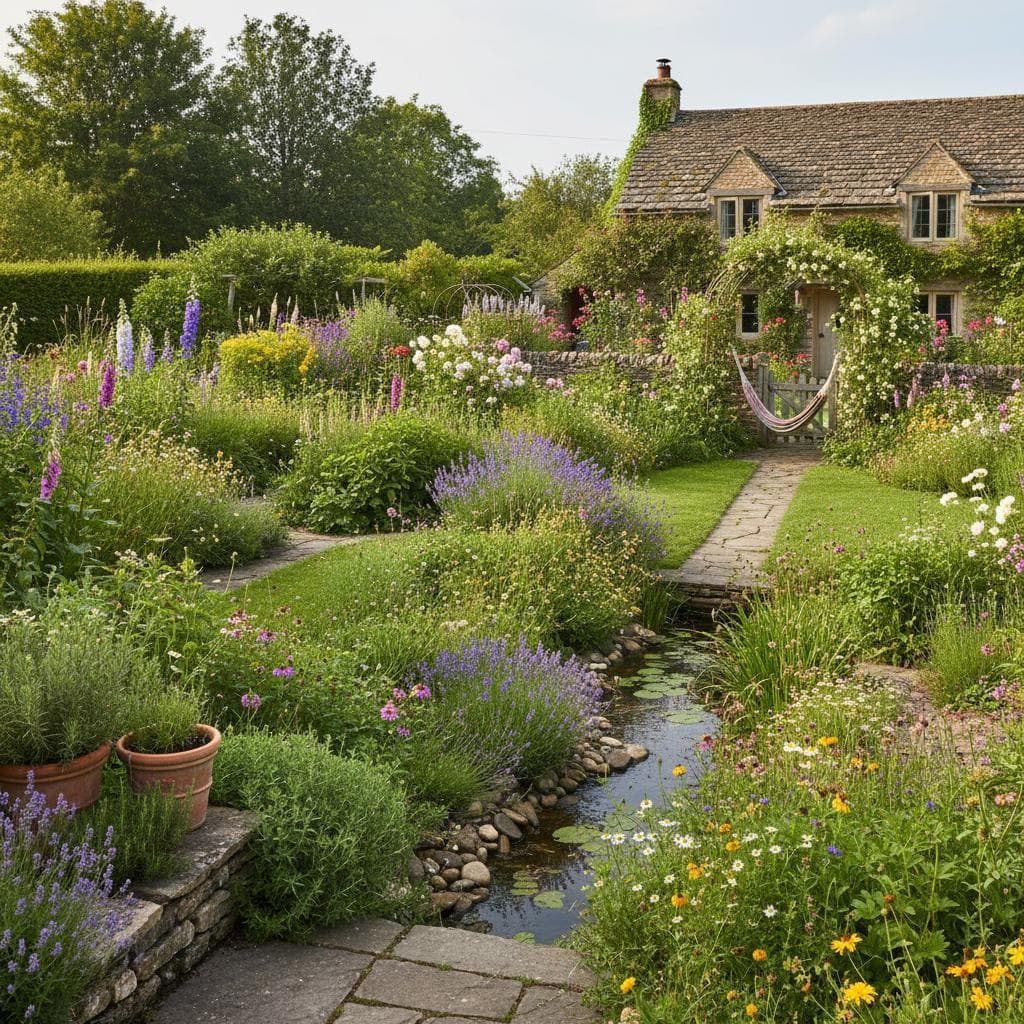Gravel Gardens: A Sustainable Alternative to Traditional Lawns
Homeowners often face the dilemma of maintaining lush green lawns that demand significant time and resources. Gravel gardens provide an elegant solution, combining decorative stones with resilient plants to create vibrant outdoor areas. This approach minimizes water use and eliminates routine chores like mowing, while fostering a natural aesthetic that enhances any property.
Essential Benefits of Gravel Gardens
- Gravel gardens substitute lawns with drought-resistant vegetation and stones, yielding a vibrant appearance with far less effort.
- They conserve water, eliminate frequent mowing, and decrease reliance on fertilizers, aligning with contemporary environmental priorities.
- Effective soil amendment and strategic plant choices ensure enduring performance.
These gardens adapt to diverse climates and support varied stylistic preferences.
The movement underscores a broader commitment to sustainable practices that emphasize simplicity, visual interest, and habitat preservation.
Building the Foundation: Soil and Design Principles
The effectiveness of a gravel garden stems from its engineered base, which promotes plant health and longevity. Unlike turf grass that requires consistent moisture, these gardens incorporate species suited to arid environments. The gravel layer functions as natural mulch, retaining soil dampness, inhibiting weed growth, and moderating root temperatures during warm seasons.
Start construction by removing existing vegetation and organic matter from the surface. Amend the underlying soil by incorporating coarse sand or grit to enhance drainage and prevent waterlogging. Install a landscape fabric barrier to further deter weeds, then spread a 2- to 4-inch layer of gravel, selecting sizes and hues that complement the intended aesthetic. This preparation creates a stable platform for planting.
Selecting Plants for Resilience and Appeal
Plant selection determines the garden's vitality and low-maintenance nature. Opt for species that flourish in well-drained, lean soils. Mediterranean varieties such as rosemary and thyme offer aromatic foliage and culinary value. Ornamental grasses like blue fescue or Mexican feather grass introduce dynamic movement and soften the stone elements.
Incorporate robust perennials including sedum for succulent texture, echinacea for bold blooms, and yarrow for enduring color. These choices not only provide visual diversity but also draw beneficial insects, contributing to a self-regulating ecosystem. Space plants adequately to allow for growth, ensuring the gravel remains prominent while the greenery evolves organically.
Environmental Advantages and Practical Gains
Gravel gardens advance ecological goals by promoting native flora that integrate seamlessly with local ecosystems. Traditional lawns depend on synthetic inputs like fertilizers and pesticides, alongside substantial irrigation. In opposition, gravel designs utilize plants that require little supplementation, thereby diminishing chemical runoff and supporting wildlife.
Ecologist and garden consultant Darren Cho observes, "A gravel garden functions as a dynamic habitat, not merely an ornamental feature. It manages stormwater, aids pollinators, and mitigates pollution in adjacent water bodies." In water-restricted areas, this method proves essential for resource management.
Property owners typically experience lower utility costs and freed-up schedules after implementation. The absence of regular trimming and watering restores leisure time, while the ecological benefits resonate with growing interest in responsible home stewardship.
Influences from Design Trends and Notable Examples
Gravel gardens have emerged in high-profile landscapes, particularly among those advocating for green living. These installations prioritize refined subtlety over elaborate displays, conveying thoughtful curation. The inherent genuineness of the design elevates it beyond mere utility.
Media outlets and online creators have popularized the concept through showcased transformations. Platforms display a spectrum of interpretations, from sleek Zen gardens to lively herb-filled patios, all emphasizing tranquility and simplicity. Such exposure has normalized the style in everyday settings.
Retailers respond with accessible tools, including pre-packaged gravel mixes and curated plant collections. This accessibility transforms innovative ideas into feasible projects for broad audiences.
Customizing Your Gravel Garden Design
Adapt the garden to personal taste by exploring these adaptable themes:
- Contemporary Minimalism: Employ light-colored gravel, structured containers, and sculptural succulents like agave for a sleek, modern profile.
- Mediterranean Vibes: Pair earthy gravel tones with citrus trees, savory herbs, and fragrant blooms to evoke a coastal retreat.
- Prairie Naturalism: Blend indigenous grasses and wildflowers within uneven stone areas for an untamed, organic feel.
- Zen Serenity: Utilize smooth pebbles, low-growing ground covers, and asymmetrical boulders to foster peaceful contemplation.
Focus on layering textures for depth, beginning with basic elements and permitting gradual maturation. As plants establish, the surface acquires a weathered charm, enhancing authenticity.
Maintaining and Enjoying Your Gravel Garden
Ongoing care for a gravel garden remains straightforward, centering on occasional oversight rather than intensive labor. Refresh the gravel layer every few years to preserve coverage and appearance. Prune overgrown plants selectively to maintain balance, and monitor for invasive weeds, removing them promptly by hand.
Seasonal adjustments enhance enjoyment: introduce seasonal accents like spring bulbs for bursts of color, or winter-hardy evergreens for year-round structure. Engage with the space through pathways that invite exploration, turning the garden into a functional extension of daily life.
Ultimately, gravel gardens deliver enduring rewards in sustainability and serenity. They conserve resources, simplify routines, and cultivate inviting environments that evolve with minimal input, proving an ideal choice for modern living.




